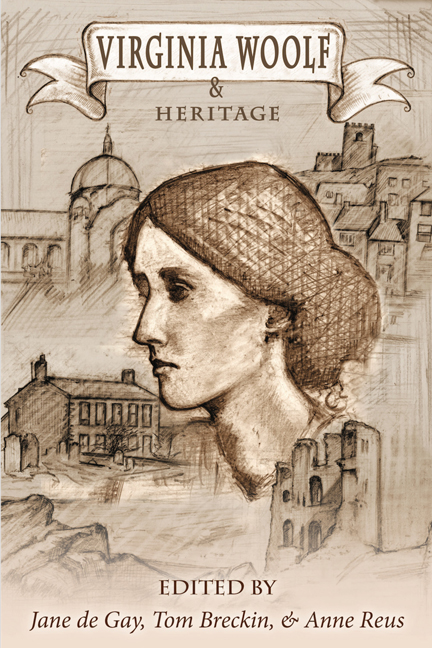Book contents
- Frontmatter
- Contents
- Introduction
- List of Abbreviations
- HERITAGE: A DEBATE
- HERITAGE, EDUCATION, AND MENTORING
- HERITAGE SPACES
- LITERARY AND CULTURAL HERITAGES
- QUEER PASTS
- Sex and Literary History in Orlando
- Queer Elizabeth: Early/Modern Feeling in Orlando and Elizabeth and Essex
- Persuading Rachel: Woolf and Austen's “little voyage of discovery”
- “The world…seen from this angle undoubtedly looks queer”: History, Heritage, and the Queer Domesticity of Between the Acts
- MODERNISM AND HERITAGE
- WRITING LIVES AND HISTORIES
- WOOLF'S LEGACIES
- FINALE
- Notes on Contributors
Queer Elizabeth: Early/Modern Feeling in Orlando and Elizabeth and Essex
from QUEER PASTS
- Frontmatter
- Contents
- Introduction
- List of Abbreviations
- HERITAGE: A DEBATE
- HERITAGE, EDUCATION, AND MENTORING
- HERITAGE SPACES
- LITERARY AND CULTURAL HERITAGES
- QUEER PASTS
- Sex and Literary History in Orlando
- Queer Elizabeth: Early/Modern Feeling in Orlando and Elizabeth and Essex
- Persuading Rachel: Woolf and Austen's “little voyage of discovery”
- “The world…seen from this angle undoubtedly looks queer”: History, Heritage, and the Queer Domesticity of Between the Acts
- MODERNISM AND HERITAGE
- WRITING LIVES AND HISTORIES
- WOOLF'S LEGACIES
- FINALE
- Notes on Contributors
Summary
In April of 1939—seven years after the death of Lytton Strachey—Virginia Woolf published her essay “The Art of Biography,” in which she provided a pointed assessment of Strachey's final work Elizabeth and Essex: A Tragic History. At the time of its publication in 1928 (famously the same year as Orlando), Woolf had privately dismissed the biography as a “lively superficial meretricious book” (D3 208), describing it to Hugh Walpole as “all purple and gold, like the cheaper effects at the Pantomime” (L4 19). She deliberately avoided the subject with Strachey, and in 1929, wrote to Vita Sackville-West: “the spectre of Queen Eth stands between us” (L4 23). In “The Art of Biography,” however, Woolf seemed to revise her opinion of the book, suggesting that the failure of Elizabeth and Essex had more to do with the limitations of the biographic form than with Strachey's capacity as a writer. “Queen Elizabeth seemed to lend herself perfectly to the experiment,” she writes. “Very little was known about her. The society in which she lived was so remote that the habits, the motives, and even the actions of the people of that age were full of strangeness and obscurity” (CE4 224). As Woolf understood it, that “strangeness” was also the cause of the book's failure. The fact that “very little was known” meant that Strachey had been “urged to invent” (CE4 225), and yet in resorting to the strategies of fiction, Woolf felt that he had exposed the limits of biographic convention. “The combination proved unworkable” (CE4 224), she writes. “The Queen thus moves in an ambiguous world, between fact and fiction, neither embodied nor disembodied” (CE4 225).
Woolf's criticism of Elizabeth and Essex draws attention to the way that both she and Strachey wrote about the early modern, and its relationship with modernity. In her essay, for instance, Woolf quotes a passage from the second chapter of Strachey's biography, in which he wonders: “By what art are we to worm our way into those strange spirits, those even stranger bodies? The more clearly we perceive it, the more remote that singular universe becomes” (Strachey 8; CE4 224). This was a question that Woolf had already contemplated in her essay “The Strange Elizabethans” (1932), which opens the second series of The Common Reader.
- Type
- Chapter
- Information
- Virginia Woolf and Heritage , pp. 134 - 140Publisher: Liverpool University PressPrint publication year: 2017



